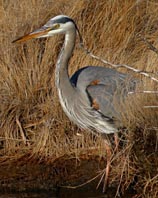Government Grants
Business Grants
Home Owner Programs
Federal Programs
About Us
Migratory Bird Monitoring Assessment and Conservation
The U. S. Fish and Wildlife Service (Service), Migratory Birds Division, Northeast Region, intends to make a sole source award in the form of a cooperative agreement to the University of Rhode Island (URI).
Funding for this project is provided under the Fish and Wildlife Act of 1956, as amended, 16 U.S.C.
742a-754, and the Fish and Wildlife Conservation Act, 16 U.S.C.
2901-291 1. URI was selected to receive this project based on continuation of collaborative effort and an expansion of work initiated several years ago to track movements of birds at regional scales using digital VHF (nanotag) technology.
This work will build on previous successes by maintaining a network of existing tracking towers along the U. S. Atlantic Coast, facilitating coordination of various nanotag projects on shared frequency, and completing meta-analyses of existing tracking data to address priorities of the U. S. Fish and Wildlife Service and the National Refuge System and Division of Migratory Birds.
This award is for the amount up to $60,00 0. URI is in a unique position as they have been partnering with Service biologists to monitor and track federally listed Roseate Tern and Piping Plover movements using nanotag technology.
They have been conducting other Roseate Tern and Piping Plover field work at the study sites in MA, RI, and NY for many years, and have piloted nanotag tracking along the U. S. Atlantic Coast in recent years (in conjunction with the Service).
The current award will involve equipment maintenance, data analysis and reporting during 201 8. This notice is an announcement for issuing a single source financial assistance award to the University of Rhode Island, Kingston, Rhode Island.
The intent of the award is to provide technical assistance to the U. S. Fish and Wildlife Service (â¿¿USFWSâ¿) Division of Migratory Birds (â¿¿DMBâ¿) and National Wildlife Refuge System (â¿¿NWRSâ¿) with movement studies of migratory birds and bats in the USFWS Northeast Region (â¿¿USFWS Region 5â¿).
Specifically, the Research Assistant would assist with various aspects of project coordination, equipment maintenance, and data analysis to support priority USFWS studies utilizing digital VHF telemetry technology (â¿¿nanotagsâ¿) and automated radio telemetry tracking stations (â¿¿telemetry stationsâ¿).
This effort will also contribute to the Motus Wildlife Tracking System, a cooperative of more than 100 researchers and organizations utilizing nanotag technology on a shared frequency to track movements of migratory birds and bats throughout the Western Hemisphere.
Funding for this project is provided under the Fish and Wildlife Act of 1956, as amended, 16 U.S.C.
742a-754, and the Fish and Wildlife Conservation Act, 16 U.S.C.
2901-291 1. URI was selected to receive this project based on continuation of collaborative effort and an expansion of work initiated several years ago to track movements of birds at regional scales using digital VHF (nanotag) technology.
This work will build on previous successes by maintaining a network of existing tracking towers along the U. S. Atlantic Coast, facilitating coordination of various nanotag projects on shared frequency, and completing meta-analyses of existing tracking data to address priorities of the U. S. Fish and Wildlife Service and the National Refuge System and Division of Migratory Birds.
This award is for the amount up to $60,00 0. URI is in a unique position as they have been partnering with Service biologists to monitor and track federally listed Roseate Tern and Piping Plover movements using nanotag technology.
They have been conducting other Roseate Tern and Piping Plover field work at the study sites in MA, RI, and NY for many years, and have piloted nanotag tracking along the U. S. Atlantic Coast in recent years (in conjunction with the Service).
The current award will involve equipment maintenance, data analysis and reporting during 201 8. This notice is an announcement for issuing a single source financial assistance award to the University of Rhode Island, Kingston, Rhode Island.
The intent of the award is to provide technical assistance to the U. S. Fish and Wildlife Service (â¿¿USFWSâ¿) Division of Migratory Birds (â¿¿DMBâ¿) and National Wildlife Refuge System (â¿¿NWRSâ¿) with movement studies of migratory birds and bats in the USFWS Northeast Region (â¿¿USFWS Region 5â¿).
Specifically, the Research Assistant would assist with various aspects of project coordination, equipment maintenance, and data analysis to support priority USFWS studies utilizing digital VHF telemetry technology (â¿¿nanotagsâ¿) and automated radio telemetry tracking stations (â¿¿telemetry stationsâ¿).
This effort will also contribute to the Motus Wildlife Tracking System, a cooperative of more than 100 researchers and organizations utilizing nanotag technology on a shared frequency to track movements of migratory birds and bats throughout the Western Hemisphere.
Obtain Full Opportunity Text:
http://www.grants.gov
Additional Information of Eligibility:
Other Eligible Applicants include the following: Alaska Native and Native Hawaiian Serving Institutions; Asian American Native American Pacific Islander Serving Institutions (AANAPISISs); Eligible Agencies of the Federal Government; Faith-based or Community-based Organizations; Hispanic-serving Institutions; Historically Black Colleges and Universities (HBCUs); Indian/Native American Tribal Governments (Other than Federally Recognized); Non-domestic (non-U.S.) Entities (Foreign Organizations); Regional Organizations; Tribally Controlled Colleges and Universities (TCCUs) ; U. S. Territory or Possession; Non-domestic (non-U.S.) Entities (Foreign Institutions) are not eligible to apply.
Non-domestic (non-U.S.) components of U. S. Organizations are eligible to apply.
Foreign components, as defined in the NIH Grants Policy Statement, are allowed.
Full Opportunity Web Address:
Contact:
Agency Email Description:
Agency Email:
annelee_motta@fws.gov
Date Posted:
2017-08-01
Application Due Date:
2017-08-07
Archive Date:
2017-08-09
Social Entrepreneurship
Spotlight
Exeter Sees Growth in Social Enterprise Sector

A partner at The Fruit Tree for Business LLP and co-founder of ESSENCE, Lorna Turner, discusses why Social Enterprise Day is a good time to celebrate Exeter’s thriving social enterprise scene.

